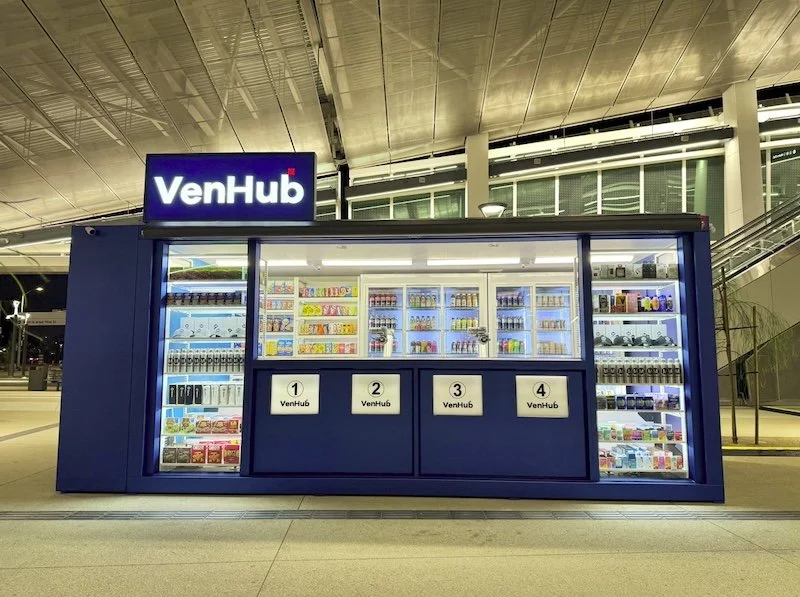How to automate workflow: cost-effective strategies for retailers
In today’s rapidly evolving retail landscape, automation is a pivotal tool for enhancing efficiency and competitiveness.
Large and small retailers are turning to technological solutions to streamline operations, reduce costs, and improve customer satisfaction. By automating workflow, retailers can simplify processes, help optimise resources, and reduce human error.
Read on to learn some key strategies on how to automate workflow.
Embrace business process management software for workflow automation
One of the most effective approaches to automating workflows in retail is the integration of business process management software. This technology can provide a comprehensive platform allowing retailers to seamlessly design, implement, and monitor their business processes.
By adopting such software, retailers can automate repetitive tasks, streamline communication, and ensure consistency across various operations, from inventory management to customer service.
For those interested in investing in business process management software, visiting reliable online resources or consulting professionals would be an excellent start.
Identify automation opportunities
Identifying automation opportunities is pivotal in streamlining retail operations.
By pinpointing these areas, businesses can strategically implement business process automation, enhancing efficiency and reducing error. This can ultimately free up valuable resources to focus on growth and customer engagement.
Here’s how to identify automation opportunities:
Assess business needs
The first step in automating workflows is to identify and assess the critical areas within the retail operations that require automation.
This involves analysing tasks that are repetitive, time-consuming, and prone to errors. Retailers should focus on automating such tasks to free up valuable resources and redirect them towards more strategic initiatives.
Prioritise high impact areas
Once potential automation areas are identified, prioritise them based on their impact on business operations and customer experience. High impact areas typically include inventory management, order processing, customer relationship management, and financial reporting.
By automating these areas, retailers can ensure significant improvements in speed, accuracy, and, ultimately, customer satisfaction.
Implement cost-effective automation strategies
Adopting cost-effective automation strategies in retail is essential for optimizing operations without excessive expenditure. This approach allows for a seamless upgrade of business processes to maximize the utility of current systems and the benefits of new automation capabilities.
Below are some cost-effective automation strategies:
Leverage open source tools
One of the most cost-effective strategies for automation is leveraging open-source tools.
These tools often come with no upfront costs and provide the flexibility to be customized according to specific business needs.
Retailers can use open source workflow automation platforms to create tailor-made solutions that fit their unique business processes without the heavy investment typically associated with proprietary software.
Integrate existing technologies
Rather than investing in completely new systems, retailers should consider integrating automation with existing technologies.
This can include upgrading their current software systems with automation capabilities or integrating new workflow automation tools with existing infrastructure. Such integrations can reduce costs significantly while providing a seamless transition for staff and stakeholders.
Benefits of workflow automation in retail
Workflow automation in retail can bring myriad benefits, significantly enhancing operational efficiency and customer satisfaction. These benefits include:
Enhanced efficiency
Operational efficiency is boosted through which is important for them because it allows them to manage more transactions with ease and without the necessity of equal increases in labor and resources.
Complex processes are streamlined in such a way that tasks are executed faster, and operational flow becomes smoother. This can help increase overall productivity and allow retailers to scale their operations well.
Improved customer experience
Automation is integral to improving the shopping experience, especially in the retail industry, where customer satisfaction is key.
Chatbots and AI powered support systems can give instant answers to customers’ queries hence making interaction more responsive than what human personnel alone cannot do.
Hence these automated systems run 24/7 ensuring that there’s a constant service leading to trust building among customers resulting into customer loyalty hence positive brand image and increased consumer retention.
Reduced operational costs
Automation introduces substantial cost savings for retailers by eliminating the need for extensive manual labor, which can be costly and prone to errors. Automating routine tasks like inventory management and data entry reduces the likelihood of mistakes that could result in financial losses.
Additionally, automation optimises inventory by ensuring that stock levels are maintained efficiently, which reduce both overstock and understock situations.
Scaling automation for future growth
To fully capitalize on automation’s advantages, retailers must engage in ongoing monitoring and refinement of their automated workflows.
Regular assessment of performance metrics is crucial, as it helps pinpoint any issues that impede efficiency. Timely adjustments based on these insights can significantly enhance the effectiveness of the automation processes.
Furthermore, investing in employee training and development becomes essential with the continuous evolution of automation technologies. Ensuring that the workforce is proficient in handling sophisticated automated systems maintains high productivity levels and encourages innovation within the team.
Conclusion
Automation in retail is no longer a luxury but a necessity for staying competitive in a dynamic market. By adopting cost-effective strategies, retailers can effectively automate workflows.
This boosts efficiency, reduces costs , and enhances the overall customer experience, paving the way for sustainable growth and success in the retail industry.






























Continue reading…